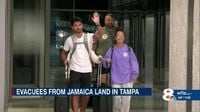When Hurricane Melissa barreled into Jamaica on November 2, 2025, it did more than just batter the coastline—it upended lives, livelihoods, and the very fabric of communities across the island. Packing catastrophic winds that reached up to 185 mph and accompanied by a devastating storm surge, Melissa left a trail of destruction that is still being tallied, but whose human cost is already painfully clear.
For those in the fishing village of White House in Westmoreland parish, the aftermath was immediate and personal. Prince Davis, a local fisher, learned through WhatsApp updates from friends and neighbors that his 50-foot fishing boat had been severely damaged—its stern punctured, cabin and back deck battered—and that his family’s home had lost its roof. To make matters worse, his father’s boat had simply vanished. Davis, who’d traveled to Nicaragua days before the storm to seek new customers for his fish business, now faced the grim reality of a shattered livelihood. “It’s going to be very rough,” he told The Associated Press. “With the damage now, no one will be buying products.”
Just 17 miles northwest in Amity, also in Westmoreland, farmer Denver Thorpe was counting his own losses: 15 acres of mango trees and two greenhouses gone. “There’s absolutely nothing,” said Thorpe, who also serves as a regional manager for the Jamaica Agricultural Society. For him, Hurricane Melissa was a cruel setback, especially after the island had only recently begun to recover from Hurricane Beryl’s devastation just 15 months earlier. That storm had impacted more than 50,000 farmers and 11,000 fishers, causing about $29 million in losses, according to Jamaica’s Ministry of Agriculture, Fisheries and Mining. “We were just about turning the corner,” Thorpe lamented.
The scale of the disaster is staggering. At least 19 deaths have been reported in Jamaica, with similar impacts felt by small producers in Cuba and Haiti. Lola Castro, regional director for the World Food Program (WFP) in Latin America and the Caribbean, told AP that “every (crop) that was on the path has been damaged, there’s no discussion on that.” Some fruit trees may recover, but many temporary crops are lost for good. The WFP is particularly worried about the 10 million food-insecure people across Haiti, Jamaica, and the Dominican Republic—a number that’s likely to rise as families struggle to rebuild homes and feed themselves in the wake of the storm.
Jamaica’s agricultural sector is dominated by small-scale producers: around 80% of the island’s more than 200,000 farmers work on plots of two hectares or less, according to Donovan Campbell, a geography professor at the University of the West Indies. “Small-scale fishing and small-scale farming is what most people use to make a living,” Campbell explained. “It is really the lifeblood of the most vulnerable in our society.” The food they produce isn’t just for local consumption—Jamaica is one of the world’s largest yam exporters, and its coffee industry generates $25 million annually, according to the Jamaica Coffee Exporters Association.
The storm’s timing couldn’t have been worse. October rains are typically used to plant crops for harvest before Christmas, and the Ministry of Agriculture had urged fishers to move equipment out of harm’s way and farmers to harvest what they could. But even the best-laid plans were no match for Melissa’s fury. St. Elizabeth parish, known as Jamaica’s “breadbasket,” was left “under water,” officials reported. The parish alone had over 35,000 registered farmers and fishers as of 2022, according to the Jamaica Information Service.
For fishers like Davis, the challenges go beyond damaged boats and lost gear. Without electricity, there’s no ice to keep catches fresh, and with the tourism industry stalled, demand has all but evaporated. “That small income every day maintains their house and their family and their school and children,” Davis said. Women producers face unique risks as well, with many heading households and relying on small-scale sales to support their children.
Meanwhile, the hurricane’s impact reached far beyond Jamaica. In Haiti, where the storm unleashed terrible flooding and caused 31 deaths, hunger was already a growing concern. The WFP, which often buys produce from female Haitian farmers to supply local schools, may now have to look elsewhere for food supplies. “We may need to bring food from other parts of the country if available or even having to import,” Castro noted. In Cuba, the evacuation of 735,000 people meant no known deaths, but crop damage was widespread across five eastern provinces. The country, already facing a severe economic crisis and spending $2 billion annually on food imports, saw damage to plantain, corn, cassava, coffee, and various vegetables. There was, however, a small silver lining: Melissa’s heavy rains replenished dams and reservoirs in drought-stricken regions, a benefit highlighted by Margarita Fernandez of the Caribbean Agroecology Institute.
The storm didn’t just devastate rural livelihoods; it also disrupted the plans of visitors and locals alike. A group of U.S. yoga influencers, stranded in a Montego Bay villa as airports shut down and flights were canceled, documented their ordeal on social media. With no way out, they took shelter in the villa’s below-ground wine cellar, improvising bedding, sanitation, and rationing generator power. Despite unreliable cellular service, they managed to share updates with their followers, offering glimpses of both anxiety and camaraderie as they rode out the Category 5 storm. Afterward, they joined neighbors in clearing debris and supporting the local recovery—a small but meaningful gesture of solidarity.
For many Jamaicans, the trauma of Melissa was compounded by tough choices. As Imani Tafari-Ama wrote in The Gleaner, many residents chose to stay in their homes rather than evacuate to public shelters, fearing inadequate resources or destruction of the shelters themselves—some of which, like those near the Plantain Garden River in St. Thomas and the Salt Spring church in Montego Bay, were indeed destroyed by the storm. “The triggers for multiple disruption of comfort can prove too much for those unprepared for this burden to handle,” Tafari-Ama observed. The author also described personal preparations, such as building flood defenses after Hurricane Ivan in 2004, and the frustration when post-storm drainage problems left lake water stagnant due to blocked channels. Local officials acknowledged lapses in prevention but responded with enthusiasm during recovery, working quickly to restore the flow of water from the lake to the sea.
Kingston, Jamaica’s capital, was relatively spared, thanks to a last-minute southwestern turn by the storm. But the western parishes bore the brunt of the destruction, with Manchester, St. Elizabeth, Clarendon, Westmoreland, Hanover, Trelawny, St. James, and St. Ann all suffering extreme wind and flooding. Many lost roofs, homes, and crops, while others found themselves marooned and cut off from loved ones. The loss isn’t just physical: broken communication systems and the anxiety of disrupted lives have created a pressing need for psychosocial support, as counselors and community leaders now recognize.
As relief efforts continue—focusing on shelter, health care, food, clean water, and restoring power and communications—there’s a growing realization that recovery will be a long road. Farmers and fishers will need cash to replace lost income, equipment, animals, and seeds. The Jamaican government’s reserve funds, insurance policies, and catastrophe bonds may provide some help, but as Campbell noted, it can take time for aid to reach small producers.
In the end, Hurricane Melissa’s legacy may be measured not just in the billions lost or the homes destroyed, but in the resilience of the communities now “picking up the pieces,” as Davis put it. The path to normalcy will be long and uncertain, but the spirit of recovery—evident in the joint labors of neighbors, volunteers, and officials—offers hope that Jamaica will weather this storm, too.

